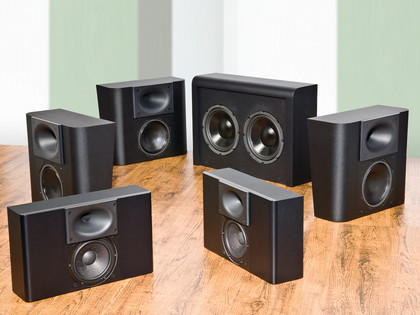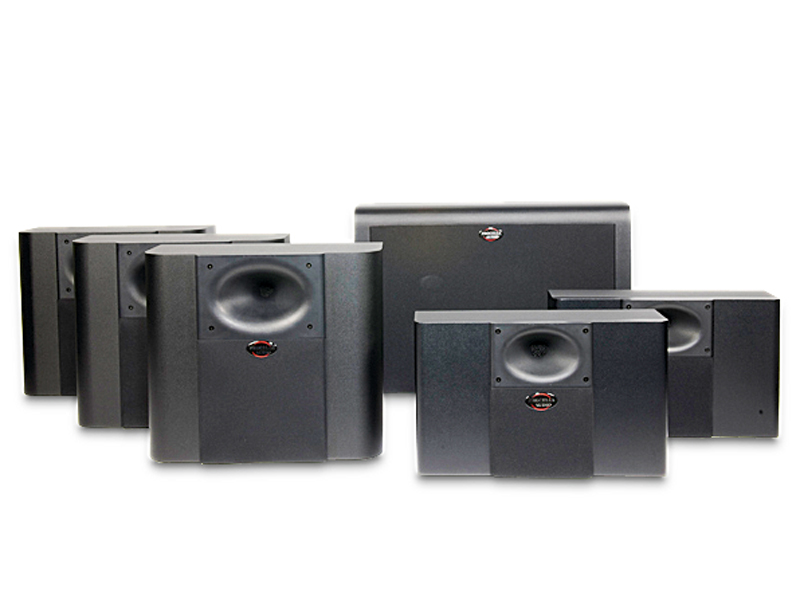TechRadar Verdict
Pros
- +
Detailed horn sound
- +
Large sweet spot and good staging
Cons
- -
The finer details are poorly executed, shamefully so
Why you can trust TechRadar
I have followed the development of the surround sound codecs since before they were let loose on the general public. In fact, I had only just hooked up a spare pair of speakers to the outputs on my then, huge Sony TV, to run what's called a Hafler surround, when I joined HCC.
It involved hooking up the speakers in the rear out of phase, but pointing in towards the listener. It was interesting but nothing like as cool as Dolby Pro-Logic, and when I was taken on a press trip to hear stereo rears for what was then called Dolby AC-3, I nearly died of delight.
Then of course came DTS and we now have fully lossless surround codecs from both Dolby and DTS, plus some fierce processing power available from our AVRs to interpolate seven surround channels.
I also love all the different 'stings' or short format demo clips that both Dolby and DTS use, from the original full-size steam train to the jet-pack powered THX robot and the ridiculous DTS wibble-wobble-ping thing.
Trouble was, nearly every speaker and amplification system I tried couldn't really cope with the lunatic levels and dynamics of that one DTS sting above all others. The movies would sound mostly fine, but very few speaker systems could deliver what the roaring dinos of the Jurassic Park franchise wanted to offer up.
In the beginning
And so it was that, inside the DTS organisation, some speakers were being designed for use in the internal demo theatre, which had to impress folks from the movie industry.
Sign up for breaking news, reviews, opinion, top tech deals, and more.
These soundboxes turned out to be so amazing that they spawned their own company, Procella Audio, and are now marketed via custom install distribution company, Pulse. And that is just as well, as there is no way on earth that the average speaker customer would look twice at these boxes.
Not for Procella Audio, who is the world of branded cast alloy parts nor pretty veneers. In fact, 'pretty' and 'design' are offensive words to the company.
However, I do feel that these 'merely functional' speaker products do have some small duty to have a modicum of appeal, especially as the system on test is a Procella 'lite' array, which includes the smaller enclosures and entry-level woofer.
As such it's meant for smaller rooms, being positioned closer to the mass market and not the hardcore CI crowd. But the manufacturer has utterly neglected this kit's desirability.
Now you may feel it is as irrelevant as the makers clearly do, but when I spend £1,700 on a loudspeaker that's part of a fabulous £10K set, I don't expect to find the serial number stuck on a flimsy, white paper address label from a stationers' shop. Nor do I like that the only branding on show is a sticky-backed plastic thing that comes off if you brush a sleeve against the grille it's slapped on to.

As per the Revolver speaker brand of old and the very early Acoustic Energy speakers, it's a product of a genius designer, or design team, and no one in the company dares point out that the emperor is not only naked, but also damned offensive to look at.
That said, the very first AE product used pukka badges and costly metal film serial number stickers, whereas these look like a shed project by comparison.
In their defence, these speakers are specifically designed to go behind acoustically transparent screens or else, by dint of their 7.5˚ of slope to their cabinets, be mounted pointing down slightly, upon the wall, and therefore simply never be in line of sight. But as a buyer, I would wonder quite why the things were so costly.
Contrast them with the delicious engineering of Monitor Audio's Platinum Series and you might wonder that, too. So what products am I whingeing about?
Well, I auditioned two P6s and three P8s, each described as an LCR product, as well as the P10 subwoofer. I was surrounded by compression-driven horns and sealed enclosures with a single high quality driver in each.
Voice of reason
The marketing bumpf takes a simple axiom – that of the identical voicing of each enclosure in a system for synergy reasons – and calls it Identical Voice. I feel that as the driver in the P6 is on a rubbery surround, while the driver in the P8 is on old-fashioned honest, folded linen, that this is piffle. (Consider, too, that the P8's compression driver is a 1.5in while the P6's is 1in).
Even identically 'voiced', louder is seen as better and the rears had to be cranked to get a level commensurate with the fronts. As Procellas are designed for high power use, you are then up against the rear channels of your amp working far harder, and that alone kicks dents into your identical voicing.
And then comes the filtering down. The full-fat Procella product does literally inspire awe. Proper British, actual awe. And that's rare. A home cinema in the US just achieved full THX certification with Procella Audio speakers, using six subwoofers and huge amounts of power.
In the case of the P6 especially, there is a total lack of awe. Sometimes, when you scale down this far the essence of a brand disintegrates.
Don't get me wrong, these are high-quality speakers and all that is published in their extensive white papers about linearity and power and fabulously-controlled dispersion is true, but for me this is like early Mercedes A class cars; essence of brand filtered down to the point of disappointment.

Like some professionally-derived audio kit I have seen in the past, this stuff is as domesticated as a Scottish Wildcat. By which I mean it's ugly, brutal to look at, but works to lofty standards.
The single XLR input to the subwoofer is evidence of this. At least you get a pro-to-home adaptor that augments our 'normal' hardware with a phono socket. (Thereby adding an annoying inch or two behind it, too.)
Start clearing the garage
The woofer goes deep and tight, and both the P6 and P8 alike use very posh drivers that really do play with clarity and potency. The imagery from the horns and the placement around you is excellent.
There's no microscopic 'sweet spot', but instead you get even, full range coverage, just like the sound you'd expect down at your local commercial multiplex. Linear and smooth, even if restrained and polite, with none of the dome tweeter snappiness that is so typical of metal domes, these are speakers for non-speaker heads who just want to be assured of having good performance.
So to sum up, this system is still not a domestic product, but in its 'lite' form, as here, it's perfect for garage conversion cinemas.
Follow TechRadar Reviews on Twitter: http://twitter.com/techradarreview
